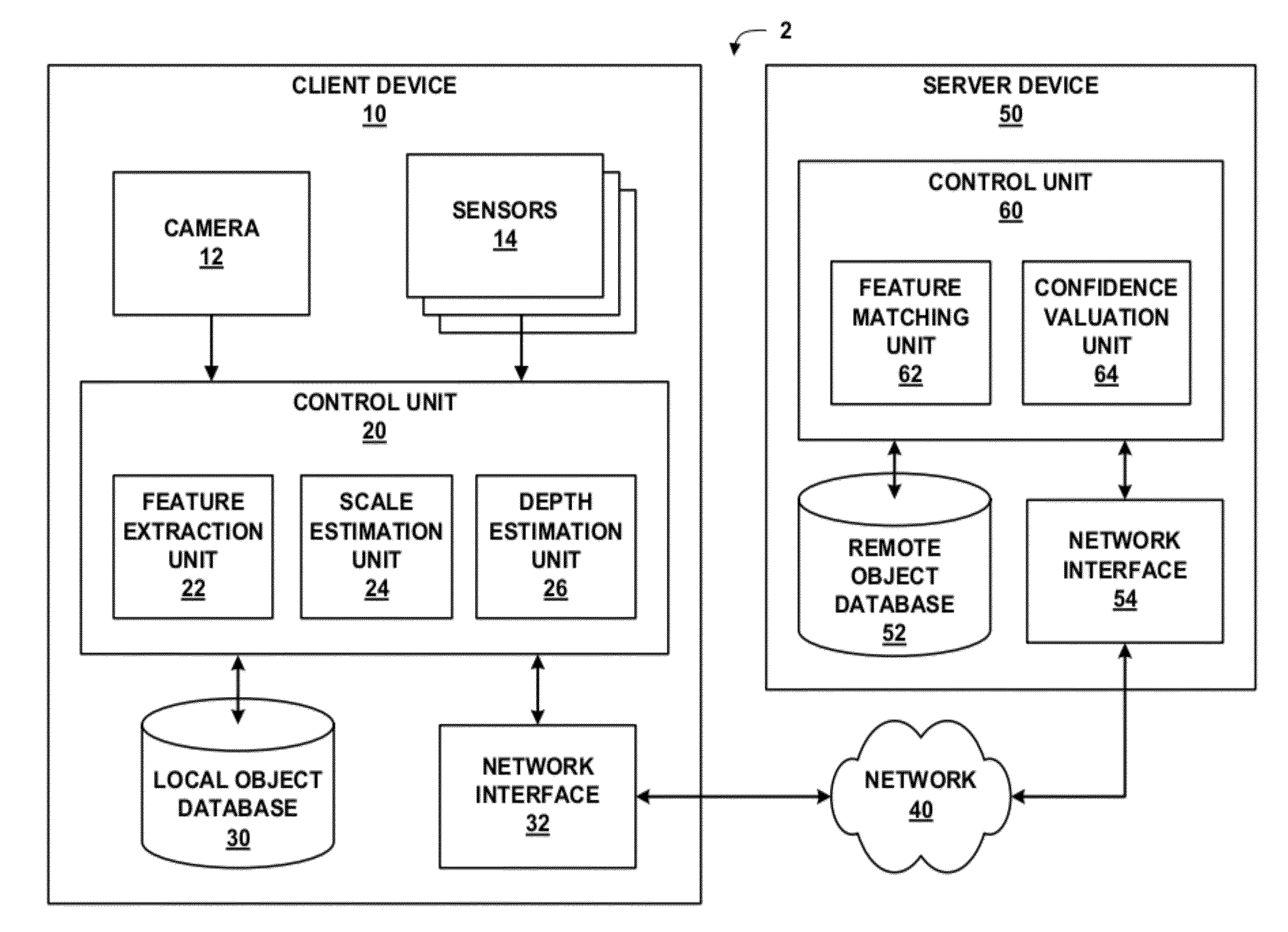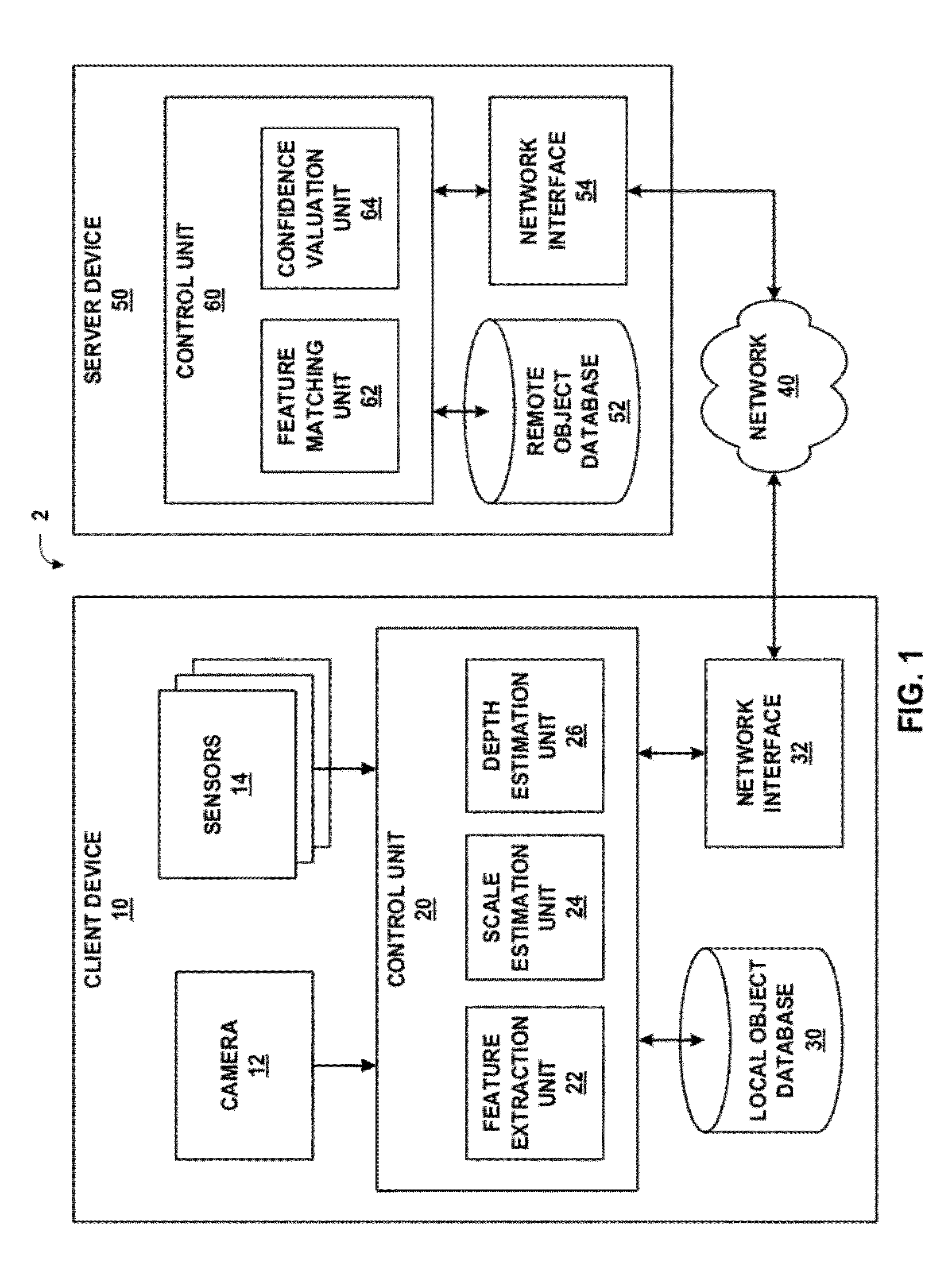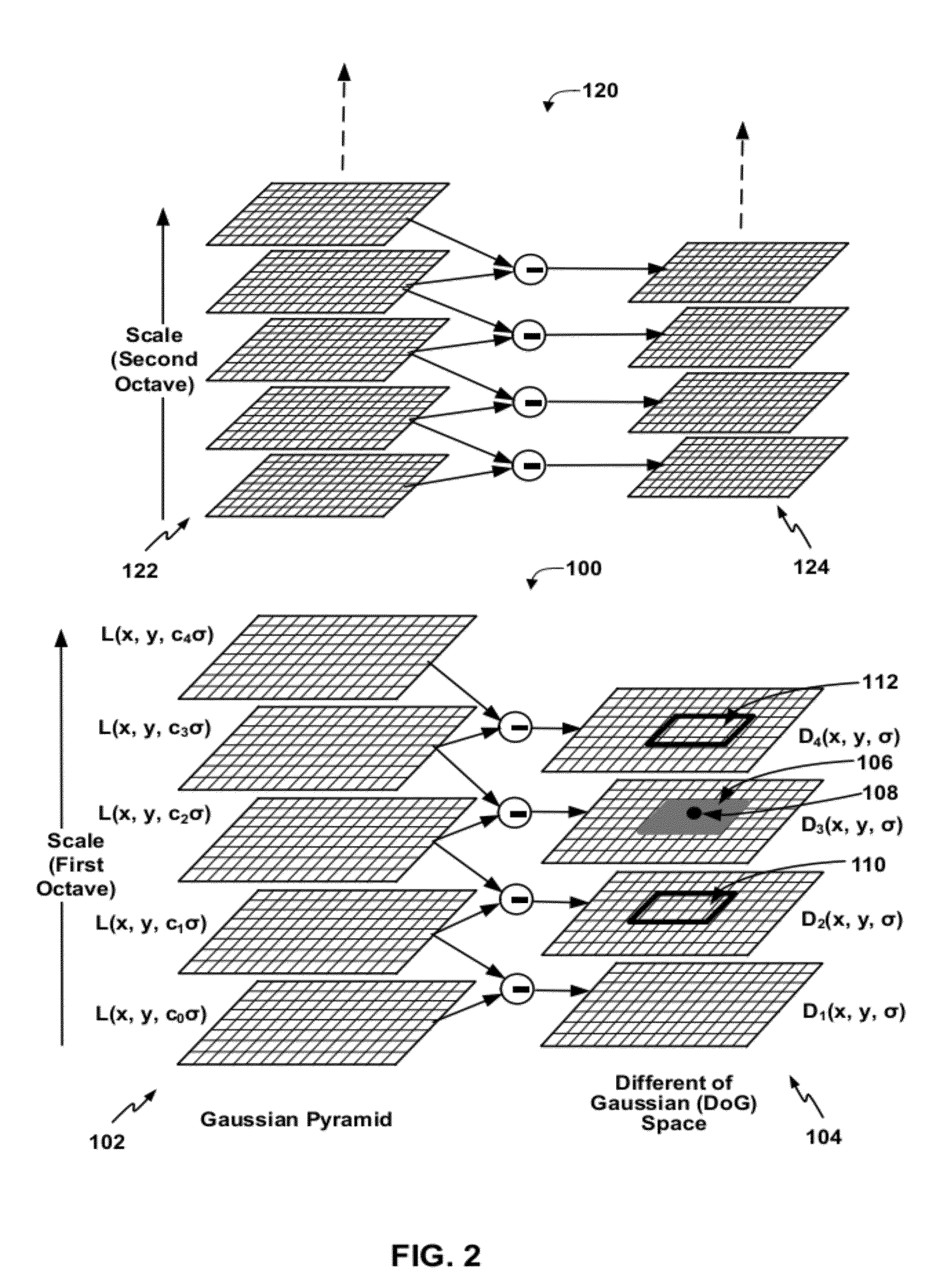Object recognition using incremental feature extraction
a feature extraction and object recognition technology, applied in the field of image processing systems, can solve the problems of limited user interfaces on mobile devices for entering text or otherwise interfacing
- Summary
- Abstract
- Description
- Claims
- Application Information
AI Technical Summary
Benefits of technology
Problems solved by technology
Method used
Image
Examples
Embodiment Construction
[0017]In general, this disclosure describes techniques for object identification in digital images. These techniques may reduce the computational complexity of identifying objects in an image. Rather than extracting feature descriptors from a predetermined number of octaves, the techniques of this disclosure provide for incremental feature descriptor extraction, progressing through the octaves. Feature descriptors may generally be extracted from one or more octaves, where each octave corresponds to a particular size (e.g., pixel resolution) of the image. For a given octave, the input image may be scaled to a size associated with the resolution. A plurality of increasingly more Gaussian-blurred images may then be formed, each having the resolution associated with the octave. These increasingly more blurry images for the octave may be analyzed to extract feature descriptors.
[0018]Rather than extracting feature descriptors for a predetermined number of octaves, the techniques of this d...
PUM
 Login to View More
Login to View More Abstract
Description
Claims
Application Information
 Login to View More
Login to View More - R&D
- Intellectual Property
- Life Sciences
- Materials
- Tech Scout
- Unparalleled Data Quality
- Higher Quality Content
- 60% Fewer Hallucinations
Browse by: Latest US Patents, China's latest patents, Technical Efficacy Thesaurus, Application Domain, Technology Topic, Popular Technical Reports.
© 2025 PatSnap. All rights reserved.Legal|Privacy policy|Modern Slavery Act Transparency Statement|Sitemap|About US| Contact US: help@patsnap.com



